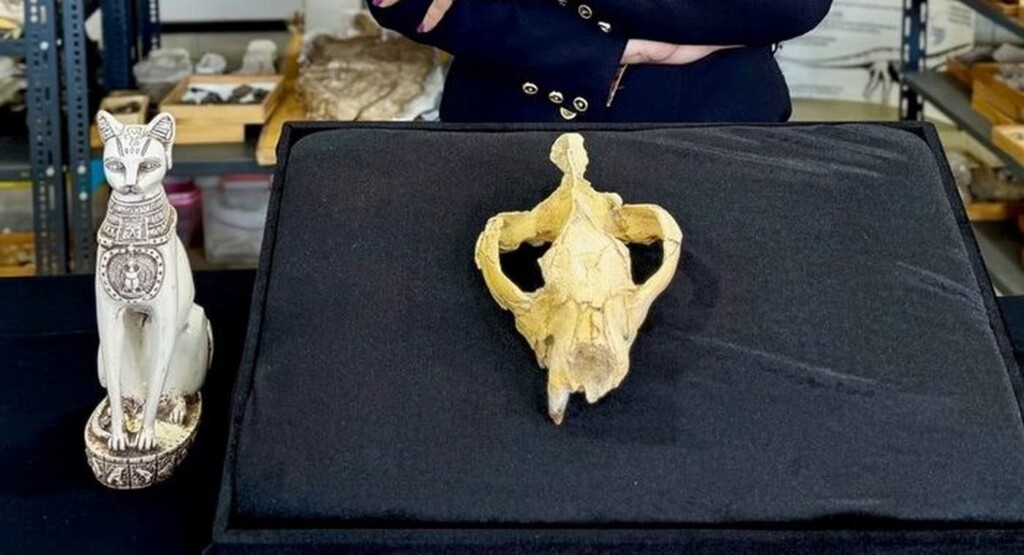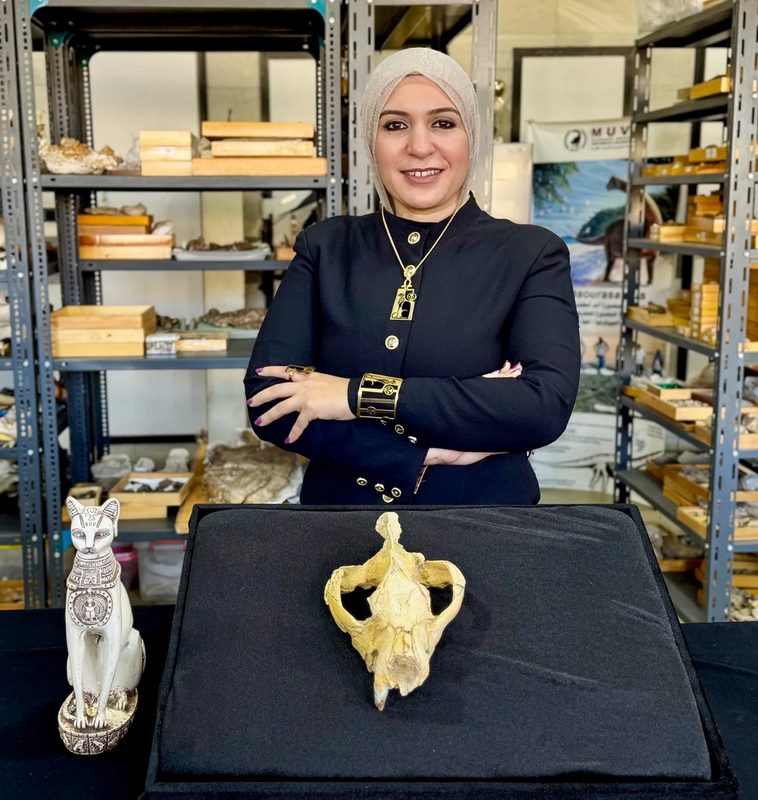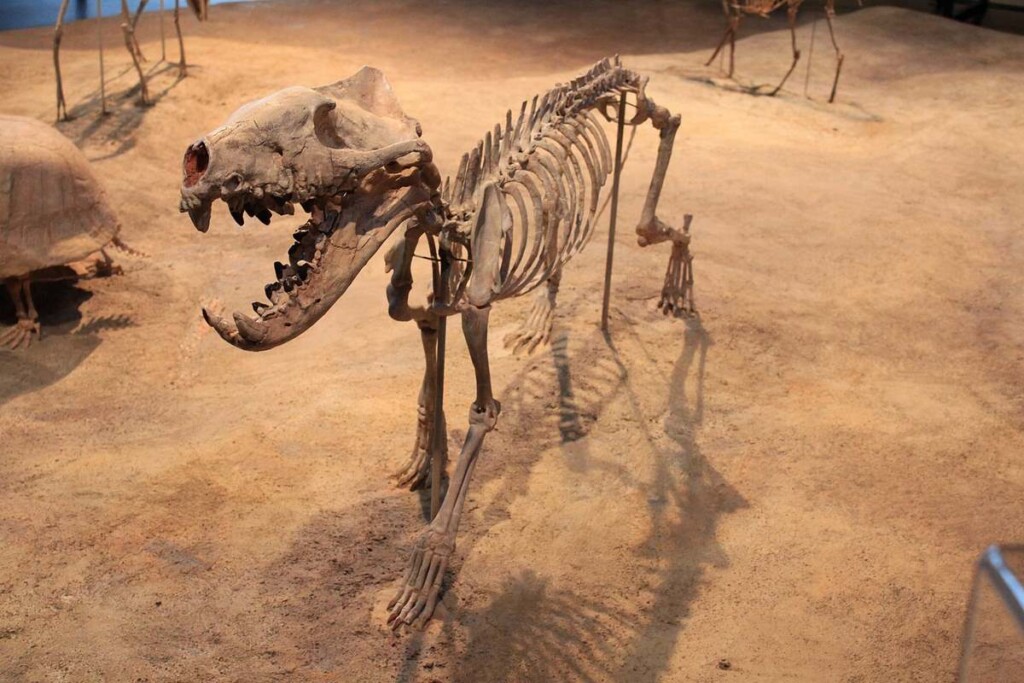This Apex Predator Was ‘King of the Ancient Egyptian Forest’ Then Mysteriously Went Extinct

From the sands of Egypt’s Western Desert, a nearly complete skull of a prehistoric apex predator offers scientists the chance to understand ever so much about how climate change affects animal extinction.
Belonging to a fully extinct order of carnivores called Hyaenodonts (hyena-teeth), the dozens of individuals that make up this lineage have been illustrated as weasel-like, cat-like, dog-like, and hyena-like, reflecting the order’s diversity.

There were Hyaeodonts as big as rhinos that weighed more than 500 pounds, and others the size of terriers, but Bastetodon syrtos, the order’s most recent addition, definitely skewed more to the slim and agile side of the spectrum.
Discovered by Shoruq Al-Ashqar from the American Institute of Cairo, she named it Bastetodon in homage to the Ancient Egyptian cat goddess Bastet.
“It was an amazing moment,” Al-Ashqar said. “This skull is important to us, not only because it’s complete and three dimensional, and actually it’s a beautiful one, but also it provides us with new traits to know more about this extinct group of carnivorous animals.”
“We can frankly say that Bastetodon was the king of the ancient Egyptian forest,” she told CNN.
Dating back 30 million years ago to the late Oligocene epoch, the species originated within the sub-family Hyainailourinae, one of several offshoots of the order Hyaenodonta containing dozens and dozens of species across Africa, Europe, Asia, and North America.
Hyainailourinae means Hyena-cats, and these more feline-like creatures first appeared in Africa about 47 million years ago when the deserts of Egypt were covered with lush tropical rainforest.

In general, Hyaenodonts like Hyainailourinae were strangely shaped animals to our sensibilities today; possessing enormous skulls, yet long and slender jaws, long tails, and very short necks. They covered a wide spectrum of sizes, and some members adapted to running on their toes, while others ran with planted feet.
One Hyaenodont was estimated to weigh in at over 600 pounds, while another was found to be the size of a large pine marten. Bastetodon probably weighed as much as a leopard or hyena. In general, it can’t be ignored how much illustrations of the creature appear like the rodents of unusual size from The Princess Bride.
In general, CNN writes, it’s easier to find herbivore fossils, and much harder to find carnivore fossils, because in a naturally balanced ecosystem, there are far more of the former than the latter.
The discovery of such a large and complete skull will help confirm concretely how large the animal’s brain was, how much muscle was attached to its jaw—and therefore bite force—and even what its sense of smell might have been.
“The fact that they lost out to cats and dogs in their evolution is still a mystery but might be caused by their highly specialized dentition,” Dr. Cathrin Pfaff, a postdoctoral researcher and lecturer at the Institute of Palaeontology at the University of Vienna in Austria who wasn’t involved in the discovery, told CNN in an email
“Because of this, such a complete find as described here brings us a step closer to solving the mystery, even (if) it is just a medium-sized specimen.”
YOU MAY ALSO LIKE: 5,000-year-old Rock Art of Boats and Cattle Unearthed in the Sahara Shows Grassland Came Before Desert
Another mystery it might reveal is the nature of an ecosystem beset by a changing climate. The Oligocene began when the Earth experienced rapid cooling—an event that marked the end of the previous, Eocene Era.
It resulted in the smallest mass extinction event in the fossil record, triggering major ‘faunal turnover,’ when ecosystems are emptied of inadaptable species whose roles and niches are filled by the survivors.
PREHISTORIC LIFE: These 385 Million-year-old Tree Roots Look Just Like Ours, and Tell a Tale Just Like Ours
In this case, modern hyenas, cats, and dogs all moved in to occupy the space that was dominated by Hyaenodonta, perhaps the reason why these animals remain apex predators today.
It is curious how an animal that evolved to hunt so many different-sized prey species would disappear entirely from the Earth. Could it be that Hyaenodonta became too diversified? Maybe Bastetodon can help us understand.
SHARE This Amazing Animal Lineage And The Skull Revealing Its Secrets…
>read more at © GoodNews
Views: 0